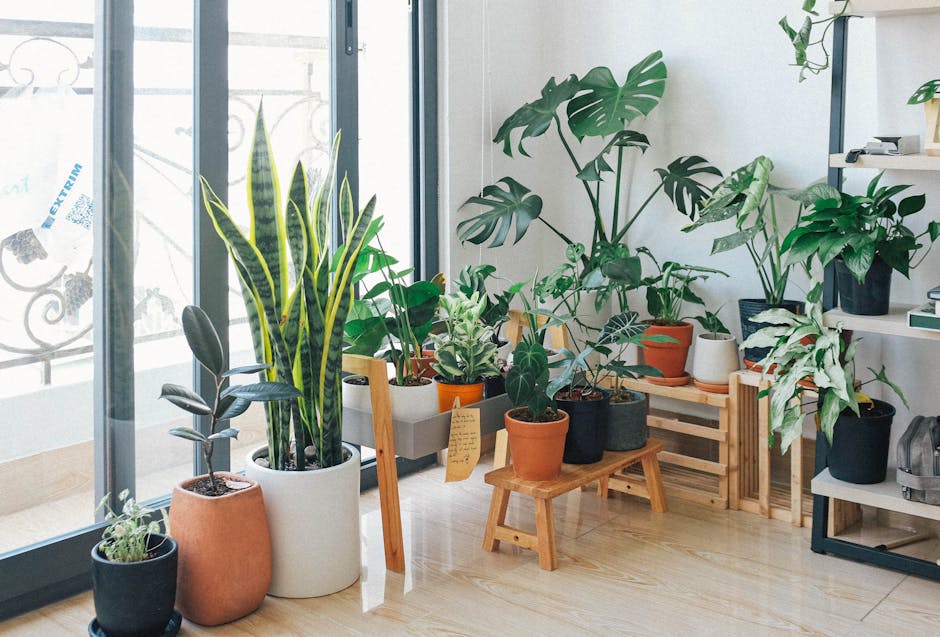Eco-Emotions: Sustainable Design for Mental Well-Being at Home
In a world that’s rapidly embracing sustainability, many of us yearn for not only a greener planet but also a healthier, happier home. What if I told you that the way we design our personal spaces can significantly influence our mental well-being? This notion, often termed "Eco-Emotions," delves into the synergy between sustainable living practices and mental health through design. Let's explore how eco-friendly choices in our surroundings can create sanctuary-like spaces that foster emotional connection and wellness.
Why Sustainable Design Matters for Your Mental Health

The spaces we inhabit hold immense power over our mental and emotional states. According to studies, a well-designed living area can enhance mood, reduce stress, and promote overall well-being. When integrating sustainable design elements, not only are we being kind to the planet, but we also cater to our own emotional needs.
A pivotal aspect of this connection is the concept of biophilic design—an approach that seeks to connect people with nature. As discussed in our article on biophilic design, introducing natural elements into your home can elevate your spirits and provide a comforting backdrop to our daily lives. From the textures of reclaimed wood to the refreshing hues of living plants, these elements serve not just aesthetic purposes but also mental health benefits.
The Psychology Behind Eco-Friendly Spaces

Understanding the psychology of how our environments affect us enables us to make informed choices about sustainable living. Research shows that cluttered, disorganized spaces can lead to increased anxiety and stress levels. On the contrary, sustainable spaces that are designed with serenity in mind—like minimalist layouts and calming color schemes—promote tranquility and focus.
Moreover, sustainable design can foster a sense of accomplishment and pride. Making eco-friendly choices, such as opting for upcycled furniture or energy-efficient appliances, contributes to a narrative where you are actively participating in positive change, which can boost self-esteem and foster happiness.
Amplifying Eco-Emotions with Color and Light

Colors and natural light profoundly influence our emotions. Shades of green and blue are often associated with calmness and tranquility, tying back to nature’s vibrancy. By selecting paints and materials that reflect these natural tones, you can create an environment that feels more open and peaceful.
Natural light, too, plays a crucial role. Incorporating windows, skylights, or even a strategically placed mirror can maximize sunlight in your home. Studies indicate that exposure to daylight enhances mood and stimulates the production of serotonin. This understanding is particularly significant when considering sustainable living, as designs emphasizing these elements may also lead to reduced energy consumption.
The Role of Indoor Plants in Creating a Harmonious Space

Additions like indoor plants not only beautify our spaces but also serve practical purposes such as purifying the air. Plants can absorb toxins and release oxygen, contributing to improved air quality. This connection is further explored in our article on the benefits of indoor plants, showcasing how these green companions impact our health.
Furthermore, caring for plants can be a therapeutic activity, helping to reduce cortisol levels—the stress hormone. Validating this sentiment, many studies suggest that incorporating greenery into interior design can create a sense of peace and promote well-being.
Eco-Friendly Materials: Making Sustainable Choices

Choosing eco-friendly materials is a powerful way to embody sustainable principles in your living space. When selecting furniture or decorations, consider pieces made from sustainably harvested wood, recycled metals, or organic textiles. Not only do these choices minimize the ecological footprint, but they also carry a unique charm and individuality that can enhance your home's character.
For example, reclaimed wood furniture has history and texture that new mass-produced items often lack, while promoting the reuse of existing resources. This aligns with the principles discussed in our blog about upcycling, revealing how the transformation of waste can yield not only functional pieces but awe-inspiring art as well.
Creating Purposeful Spaces: The Art of Feng Shui in Sustainable Living
Feng Shui—an ancient practice rooted in balancing energy within a space—offers insightful principles for sustainable design. By incorporating Feng Shui into your eco-friendly designs, you can enhance the flow of energy and promote well-being. Sustainable elements such as circular layouts using sustainable materials align with Feng Shui principles and can lead to a serene lifestyle.
Consider how you might arrange spaces to invite calm; positioning furniture for flow, incorporating natural light, and ensuring an uncluttered arrangement can significantly elevate the ambiance. You can create areas for meditation or reflection—vital for mental well-being—by thoughtfully integrating soft textures and natural colors.
Soundscapes: Unlocking the Hidden Power of Sound
Another often-overlooked element of personal space is sound. Noise pollution can lead to stress and anxiety, detracting from mental peace. In contrast, creating a soundscape filled with soothing natural sounds can enhance tranquility. Our article on the impact of sound in eco-friendly spaces discusses how audibility can profoundly affect our mood.
Simple changes to your environment, such as adding a water feature or an indoor fountain, not only beautify but add calming sound that lulls the mind. Through mindful engagement with sound, we can take another step toward creating an eco-friendly haven.
Minimalism: The Intersection of Simplicity and Sustainability
In a world obsessed with consumerism, embracing minimalism stands as an act of rebellion against excess. Minimalism encourages individuals to focus on what truly brings joy and fulfills functional needs, allowing for meaningful connections with the environment and personal spaces.
By adopting a minimalist approach, you reduce clutter, and in doing so, you create a more tranquil space conducive to mental well-being. This perspective dovetails beautifully with sustainable living principles, as often, less consumption translates into a smaller carbon footprint.
The Circular Economy: Transforming Spaces Sustainably
Engaging with the circular economy can empower individuals to rethink how they design their homes. The principles of reuse and recycling allow you to transform your environment creatively while minimizing waste. This philosophy is at the core of our article on circular meal planning, which can extend to every aspect of your living space.
By investing in products designed for longevity and repurposing items, you contribute not only to your mental clarity but also to a greater purpose—preserving the environment. In doing so, you nurture both your personal well-being and the health of the planet.
Personal Stories: Living Sustainably and Emotionally Fulfilled
Let me share a personal story illustrating the impact of sustainable living—when I relocated to a new apartment, I made it a priority to create an inviting, eco-friendly haven. I scoured thrift stores for unique, second-hand furniture pieces, finding a beautiful reclaimed wood table that became the centerpiece of my dining experience.
Surrounded by vibrant plants and infused with soothing sounds from nature, my home transformed into a sanctuary where I felt at peace. This conscious design choice not only reduced my carbon footprint but also enhanced my overall happiness, enriching my everyday life.
Next Steps: Crafting Your Eco-Friendly Sanctuary
Feeling inspired to create your own eco-friendly space? Here are some actionable tips to get you started: 1. Assess Your Space: Look critically at your current living arrangements. Identify areas that may benefit from decluttering or new sustainable elements. 2. Incorporate Nature: Integrate plants into your decor plan. Consider starting with easy-care varieties like snake plants or succulents. 3. Choose Sustainable Materials: When replacing furniture or other decorative pieces, seek out sustainably sourced or recycled items that add character. 4. Mindfully Arrange: Experiment with Feng Shui principles to enhance the energy flow in your space. Focus on arranging elements for balance and calm. 5. Create Soundscapes: Rethink background noise. Use apps that replicate nature sounds or incorporate soothing music to resonate with tranquility.
By implementing these small changes, you can start to nurture a personal space that is not only eco-friendly but one that significantly enhances your mental well-being.
Final Thoughts: A Journey Toward Eco-Emotions
Navigating the world of sustainable living intertwined with mental health offers profound insights. As we learn to incorporate eco-friendly designs into our spaces, we're crafting not just homes but also nurturing environments that buffer us from the stresses of daily life. From selecting materials that tell a story to honoring our need for natural light and greenery, every choice made in favor of sustainability resonates with emotional well-being.
Let your living spaces be a canvas expressing care for both the planet and yourself. Embrace the transformative power of sustainable design and watch as your home evolves into a sanctuary that nurtures not just your values but your mind, body, and spirit.



